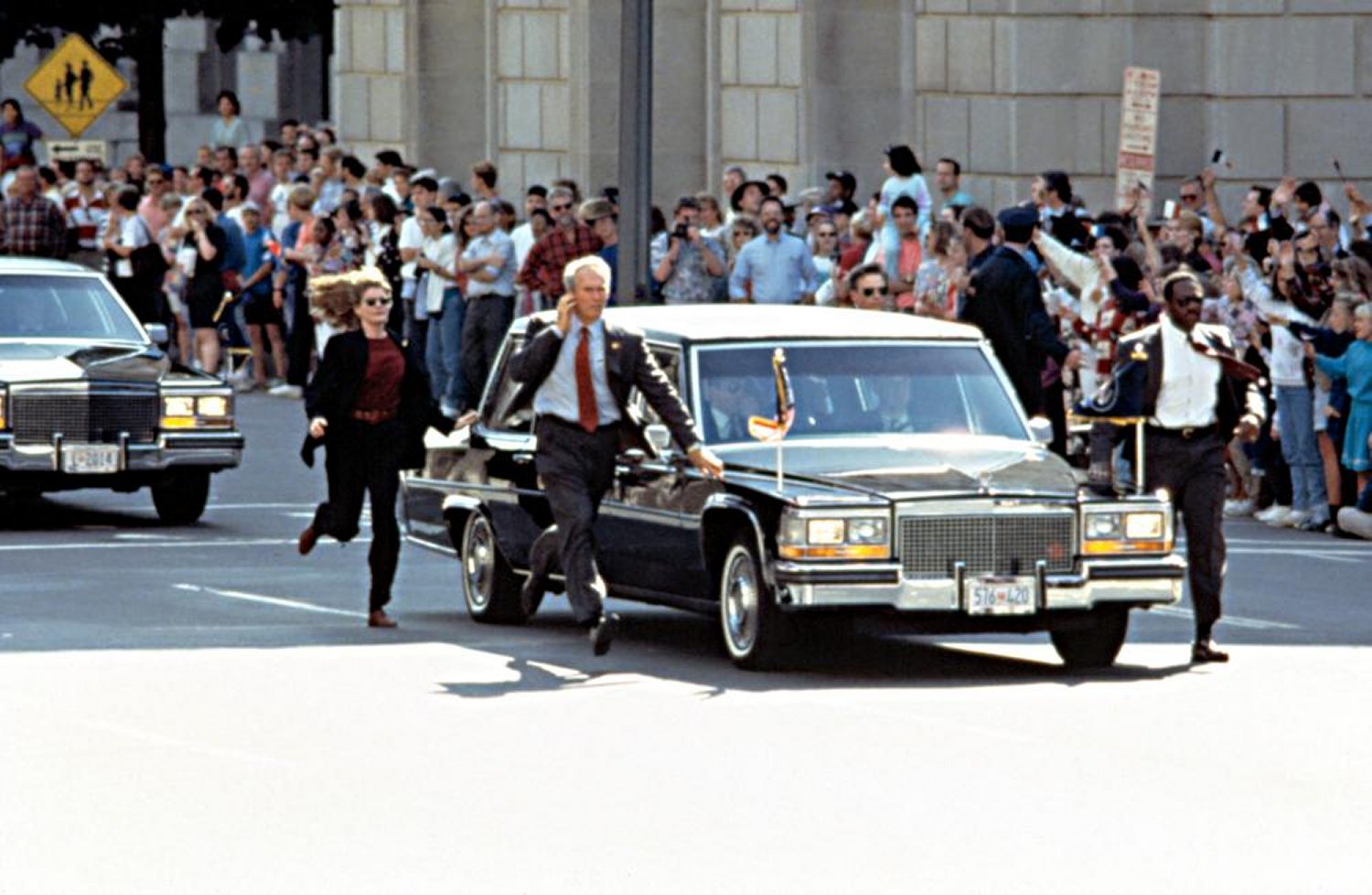How 10% of In The Line Of Fire’s Budget Went to Computer Effects
1993's In The Line Of Fire may not look it, but it was a film in its own way reliant on visual effects.
Whilst James Cameron’s The Abyss (1989) and Terminator 2: Judgment Day (1991) remain both seen as major turning points in demonstrating the capability of visual effects in big blockbuster movies, there are a couple of smaller movies of the 1990s that also point the way. Not in a big, showy manner, more in straight down the line practicalities.
Take the little seen biopic of baseball star Babe Ruth. The Babe starred John Goodman, and had a budget of $12m to play with. That wouldn’t cater for the extras required to fill a baseball stadium for key images in the movie, and thus the movie became one of the first to deploy computer technology to generate big crowd shots. Likewise, one of George Lucas’ passion projects, Radioland Murders, only became available to make on a low price because its director, the late Mel Smith, was able to deploy technology to reduce costs rather than increase it.
When we talk about visual effects in 1993 movies, meanwhile, inevitably the conversation is dominated by Steven Spielberg’s Jurassic Park. But as a contrast, another notable hit of that summer – In The Line Of Fire – was just as reliant on technology for some of its key shots.
Starring Clint Eastwood and Rene Russo, and directed by Wolfgang Petersen, In The Line Of Fire remains a terrific Hollywood thriller, with Eastwood’s ageing Secret Service agent on the trail of, and being taunted by, a potential Presidential assassin. John Malkovich played said assassin, and many taut scenes in the movie are simply him and Eastwood on the phone.
However, to get across the gravitas and scale of the threat, Petersen needed help. As such, of the reasonable $40 million budget (quite high by 1993 standards, although it did have a movie star to fund out of that), around 10% was turned over to get some key visual effects.
Sony Pictures Image Works had been founded by Sony in 1992, with the first job its then miniscule team to do some previsualization work on the Bruce Willis-headlined thriller, Striking Distance. But one of its other earliest jobs was to achieve some specific shots that In The Line Of Fire required.
In particular, the movie demanded footage that placed Eastwood’s Frank Horrigan in the midst of a Presidential election campaign. When the film was being shot in 1992, the battle was on for the US Presidency between then-incumbent, George Bush The First, and his upcoming rival, one Bill Clinton. The filmmakers thus captured footage from the pair’s Presidential rallies on the campaign trail. On top of that, pictures of President Bush exiting Air Force One were also shot, and the job of Image Works was to convincingly make Eastwood’s character a part of those scenes. To their immense credit, few would see the joins. Ironically, there’s a moment in the film where Eastwood is Photoshopped into an archive still photograph that stands out an awful lot more.
Going back to the footage. In an era when this job was nowhere near as straightforward as it is today, Messrs Bush and Clinton were taken out of the footage of their rallies, and In The Line Of Fire’s fictional campaigning President, played by Jim Curley, was edited in. Meanwhile, on the rostrum alongside him, there was Eastwood.
Eastwood had reportedly been concerned about using all of these images, incidentally, wanting them to be subtly used, and not overplayed. He got his wish. Curley was also edited onto the steps of Air Force One, too. The Presidential scenes were taken care of.

However, then there was a further challenge. The story of In The Line Of Fire requires us to believe the Frank Horrigan was one of JFK’s bodyguards. Petersen wanted to show this, and that presented arguably the film’s biggest technical challenge. Eastwood needed to be edited into archive material for this to work.
The problem? The material concerned was dated three decades before the setting of the film, and Eastwood at the time of shooting was 62. He needed to look in his early 30s for it to work, and match the appearance of the earlier news material.
A plan was hatched. The Image Works team highlighted shots from the original Dirty Harry film, and used the footage of a younger Eastwood, and blended them into the old news footage. It was a sizeable job, albeit much lower profile than Spielberg’s dinosaurs. Yet still of real import to the film concerned.
The complexity determined the price tag. And while In The Line Of Fire may not look the kind of film where a tenth of the budget got spent on effects, it was one of those instances where it was the most economical way to realize what was required.
